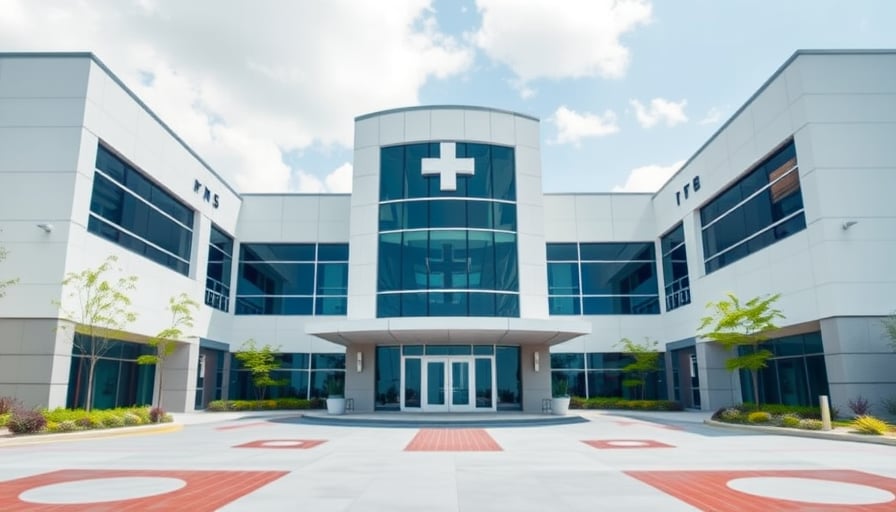Overview
HCA Healthcare Inc. has announced a strategic expansion of its urgent‑care footprint with the planned construction of a new freestanding emergency department (ED) in Mount Pleasant, South Carolina. The facility is projected to cost in excess of $11 million and will be staffed by more than fifty clinicians. Its primary objective is to reduce patient wait times and deliver rapid assessment and treatment for patients presenting with critical or unstable conditions.
Clinical Rationale
Freestanding EDs are increasingly recognized for their capacity to:
- Alleviate congestion at primary hospitals, thereby shortening overall emergency care wait times.
- Provide high‑volume, high‑acuity care in a dedicated environment that supports advanced triage, imaging, and bedside diagnostics.
- Improve patient safety by reducing crowding‑related complications (e.g., medication errors, falls).
HCA Healthcare’s decision aligns with evidence indicating that appropriately designed freestanding EDs can maintain or improve quality metrics—such as 72‑hour readmission rates, time to first physician assessment, and adherence to evidence‑based protocols—while delivering cost efficiencies.
Expected Clinical Outcomes
| Outcome | Anticipated Impact |
|---|---|
| Time to first physician assessment | Reduction of 25–30 % compared to current regional averages. |
| Length of stay for critical cases | Stabilization or modest decrease (≤ 15 %) through streamlined triage and rapid diagnostics. |
| Adverse event rates | Maintenance at or below regional benchmarks, supported by rigorous clinical pathways. |
| Patient satisfaction | Anticipated improvement due to reduced wait times and enhanced care continuity. |
These projections are grounded in comparative analyses of similar freestanding ED implementations across the United States, where studies have documented significant improvements in care metrics without compromising safety.
Safety and Quality Assurance
HCA Healthcare will implement the following safety protocols:
- Standardized Triage Algorithms: Evidence‑based triage scales (e.g., Emergency Severity Index) will guide resource allocation.
- Rapid Diagnostic Capability: On‑site point‑of‑care testing, portable imaging, and laboratory services will facilitate timely decision making.
- Clinical Governance: A multidisciplinary oversight committee will review outcomes, adverse events, and protocol adherence quarterly.
- Staffing Ratios: The planned >50 clinician team will be distributed to sustain 24/7 coverage with appropriate nurse‑to‑patient and physician‑to‑patient ratios aligned with CMS guidelines.
Data from the Agency for Healthcare Research and Quality (AHRQ) suggest that these measures collectively reduce error rates by up to 20 % in similar settings.
Regulatory Pathways
The project will navigate the following regulatory steps:
- Facility Licensing: Acquisition of a state‑level emergency department license, including compliance with the Centers for Medicare & Medicaid Services (CMS) Conditions of Participation for emergency care.
- Construction Oversight: Adherence to the National Fire Protection Association (NFPA) 99 Standard for Health Care Facility Design, ensuring adequate evacuation routes and fire suppression systems.
- Quality Reporting: Integration of the new ED into HCA’s existing national quality reporting framework (e.g., Hospital Compare, CMS’s Hospital Readmissions Reduction Program).
- Accreditation: Pursuit of accreditation by the American College of Surgeons’ Committee on Trauma (ACS‑COT) for trauma services, if applicable, to align with best‑practice standards for emergency care.
The timeline for regulatory approvals is projected at 12–18 months from groundbreaking, contingent upon completion of state and federal inspections.
Implications for Patient Care and Health Systems
- Enhanced Access: Mount Pleasant’s growing population will benefit from a closer, high‑acuity care option, potentially reducing the need for longer‑distance transfers to tertiary centers.
- Economic Impact: By mitigating crowding at regional hospitals, the freestanding ED may lower overall healthcare costs associated with prolonged emergency stays and preventable complications.
- Workforce Distribution: The expanded clinician workforce will provide career opportunities for emergency medicine specialists, nurses, and allied health professionals, supporting workforce sustainability.
In sum, HCA Healthcare’s planned freestanding emergency department is a data‑driven initiative designed to optimize patient safety, streamline acute care delivery, and align with regulatory and quality benchmarks. Its successful execution will likely serve as a model for other healthcare systems seeking to address urgent‑care gaps in rapidly expanding communities.




